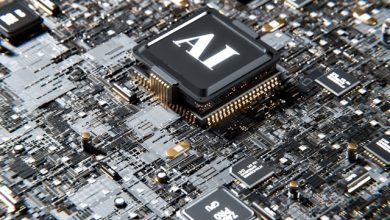For years, smart home technology has promised greater comfort and convenience. Voice assistants connected lighting and smart thermostats gave homeowners a taste of futuristic living. But as energy costs rise and the climate crisis intensifies, that vision is evolving. We are entering a new era of smart homes, where the most powerful features are no longer simply about control or convenience, but expanding to encompass intelligence, automation and sustainability too.
At Voltalis, as Europe’s leading demand response (DR) technology provider, we are seeing this shift firsthand. Smart homes are no longer defined by flashy features or app-based control. The next generation of home technology is about embedding intelligence into the national and home infrastructure itself, so it works seamlessly, automatically and with purpose. The goal is to cut energy bills, reduce carbon emissions and give people effortless control over their energy use.
Smarter homes, not just smart devices
The early promise of smart tech was exciting but largely cosmetic. Devices looked sleek and responded to voice commands, but they often operated in isolation. Over time, consumer expectations have grown, and now people want more than convenience. They want solutions that deliver real value. Increasingly, that value is measured in efficiency, sustainability and cost savings.
This represents a deeper shift in how we define what it means for a home to be “smart”. Intelligence is no longer about interaction, but optimisation. The most impactful smart home technologies will not be the ones users touch, but the ones that act autonomously to deliver energy benefits at scale. As AI becomes more deeply embedded in infrastructure, homes are evolving from reactive environments into adaptive, energy-aware systems.
We believe the next evolution of smart homes will be defined by intelligent systems, connected to the grid and capable of making real-time decisions. That is where artificial intelligence applications of demand response, which in essence helps to balance power demand on energy grids, becomes essential.
AI transforms smart homes from passive, user-controlled setups into active, responsive energy ecosystems. It allows homes to adapt automatically to changes in grid demand, weather conditions and household usage patterns. With this level of intelligence, homes can optimise their energy use without homeowners having to lift a finger.
Energy automation without the effort
At Voltalis, we have developed a system that manages energy usage quietly in the background, helping end users evolve from manually limiting their energy consumption during certain critical hours, to benefitting from AI-driven technologies that make energy flexibility both dynamic and automated. Using AI and real-time data, our platform automatically shifts household consumption away from peak times. The result is on average 15% in energy savings, all without compromising comfort or requiring behavioural change. No discomfort. No disruption. Just smart savings, on autopilot.
There is no need for users to adjust their habits, or manually control devices. Everything runs in the background. That is what we mean by invisible intelligence. It is not about flashing lights or notifications. It is about delivering lower bills and lower emissions without disrupting everyday life.
This level of seamless automation is crucial for mass adoption. One of the biggest barriers to energy-efficient behaviour is effort. By removing that friction entirely, AI-driven systems like ours make energy optimisation not only possible, but passive. In behavioural terms, we are shifting from an opt-in model of sustainability to one where energy savings are delivered by design.
Changing expectations in a changing market
Our recent consumer data analysis found that between January and March 2025, our platform has helped consumers save 10,605 tonnes of carbon emissions, equivalent to 160 centuries of electric heating, which had a positive financial impact on their energy bills. This analysis confirmed what we have seen across the market, that needs and expectations around smart technology are changing. People are prioritising energy efficiency and cost control over style and convenience. They want to know their technology works for them, both economically and environmentally.
This change reflects broader societal trends. Rising energy prices and the increasing urgency of meeting growing climate-related regulatory standards are reframing how consumers engage with their homes. For landlords and developers, this also signals a shift in competitive advantage. Properties equipped with grid-friendly future-proofed energy systems are already more attractive to tenants and buyers. Smart energy infrastructure is becoming as essential as broadband or heating.
That shift is significant and signals a move away from isolated smart gadgets and towards integrated systems that support real-time energy flexibility. Unfortunately, many traditional smart home devices are not designed with this in mind. They may be connected, but they are not intelligent in a way that responds to grid needs or helps reduce peak demand.
This is where our approach is different, as Voltalis systems connect directly to the energy network, enabling homes to actively support grid stability. During periods of high demand, such as cold mornings or evenings or unexpected surges, we automatically adjust consumption across thousands of homes in seconds. This helps reduce the need for carbon-intensive backup generation and brings more flexibility to national energy systems.
The implication here is strategic. Grid-friendly smart homes are not just good for the consumer, they are a growing asset for the energy system. As renewables scale up and baseload generation becomes more variable, flexible demand will be essential to maintaining stability without adding cost or carbon.
Proven impact across Europe
We have already installed our technology in hundreds of thousands of homes across Europe. The results are clear. A study from Compass Lexecon shows that a 10 GW DR capacity, as projected for France in 2030, allows to decrease the price by circa 40€/MWh for the highest peak price. That equates to meaningful savings on bills and measurable reductions in carbon emissions.
Our service is provided free of charge to households. Instead of charging homeowners, we work directly with grid operators who reward flexibility. Additionally, our work with University of Wales Trinity Saint David’s student halls resulted in 13% energy savings, so the technology is not just beneficial for individual homes. This model ensures benefits for everyone involved: residents, energy providers and the planet.
In a policy context, this model demonstrates the viability of distributed energy intelligence at scale. It is not just a theoretical benefit, but a practical and proven one. Demand-side response, when combined with AI and real-time control, can be deployed quickly, cost-effectively and with broad public support.
What comes next
We believe AI-led energy automation will soon be a standard feature in every smart home. The technology is mature, demand is growing, and the need to reduce emissions is more urgent than ever.
This is more than just an upgrade in technology; it’s a shift in thinking. Smart homes are no longer just about speaking to your devices or setting the perfect room temperature. They are evolving into intelligent partners in the drive for a cleaner, more affordable energy future.
The future smart home does not need to be seen or heard to make a difference. It just needs to work quietly and intelligently in the background, and that is exactly what we have built.





